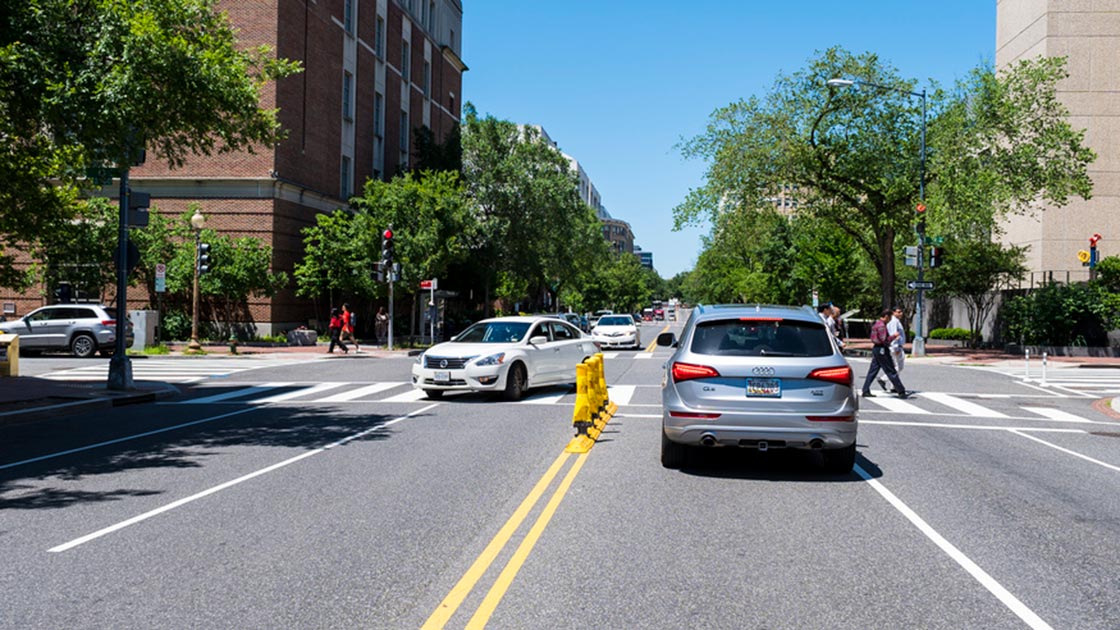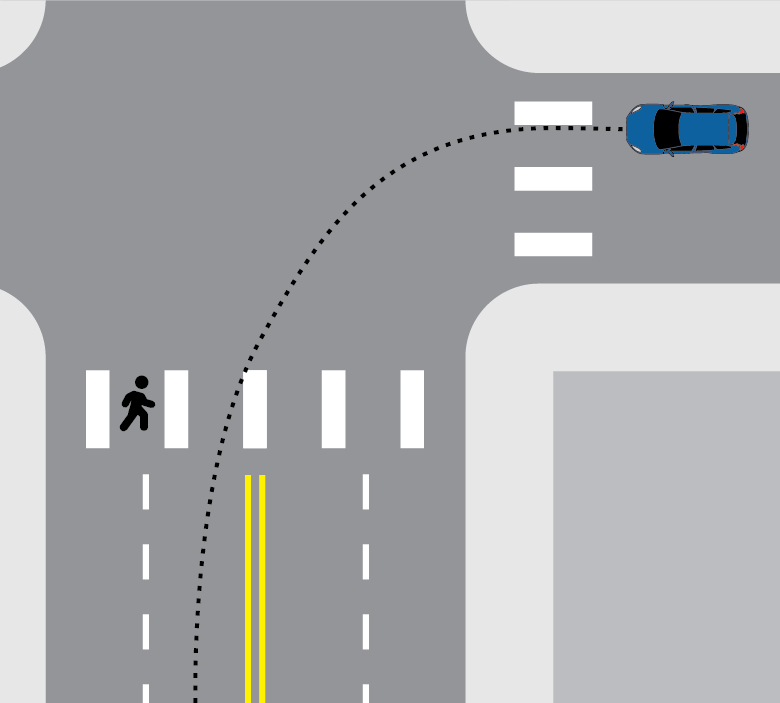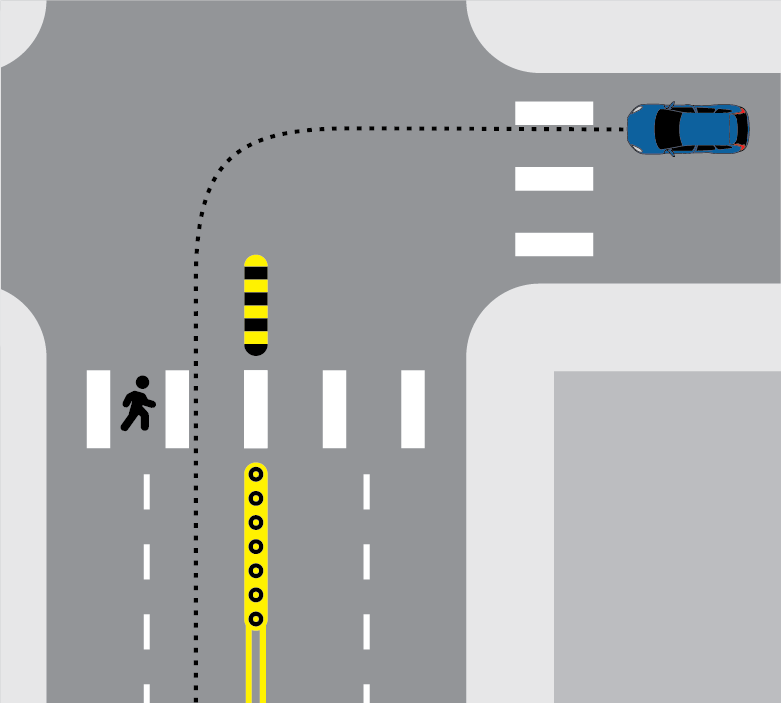Simple infrastructure changes make left turns safer for pedestrians
April 9, 2020

Bollards and rubber curbs that prevent drivers from cutting across intersections at a diagonal can make streets safer for pedestrians, according to a new study from the Insurance Institute for Highway Safety.
Such "centerline hardening" forces drivers to turn more slowly at close to a right angle by blocking the diagonal path through the crosswalk. In Washington, D.C., the infrastructure changes reduced the number of times drivers had to swerve or brake suddenly or pedestrians had to dodge out of the way by 70 percent, says IIHS Senior Research Transportation Engineer Wen Hu, the author of the paper.
"This study suggests that simple infrastructure changes can deliver big benefits," Hu says. "Communities looking for ways to make pedestrians safer should add centerline hardening to their toolbox."
The calming infrastructure also resulted in a reduction in average left-turn speeds and decreased the odds that drivers made the turn at speeds exceeding 15 mph.
Pedestrian fatalities rose 53 percent from 2009 to 2018 and now account for 17 percent of traffic deaths nationwide. In response, cities across the United States have launched Vision Zero programs aimed at eliminating all such fatalities by passing laws aimed at curbing aggressive driving and by looking at ways to improve road designs.
Centerline hardening is a technique to make intersections safer for pedestrians by encouraging drivers to make left turns at slower speeds. Bollards and rubber curbs are used to block the diagonal path through the intersection.


A little more than half of all crashes involving pedestrians took place at intersections in 2018, resulting in more than 6,700 serious injuries to pedestrians and more than 1,500 pedestrian fatalities. In one of the more common scenarios, a driver making a left turn crashes into a pedestrian crossing the road the driver is turning onto. These left-turn crashes accounted for nearly a third of all pedestrian-involved crashes at intersections in 2018.
To combat the problem, some cities have begun installing left-turn traffic-calming measures at their intersections. New York City has used these methods at more than 300 intersections since 2016. The District of Columbia began a similar effort as part of its Vision Zero program in 2018, with plans to target 85 intersections by the end of this year. One turn-calming technique the city uses is centerline hardening, which consists of rubber curbs and bollards installed on the yellow center line.
Seeking to determine how effective the practice is, Hu collected data from 10 D.C. intersections over similar observation windows during two months before and three months after the infrastructure changes and compared them with eight control sites where no centerline-hardening features were installed.
Hu tabulated both the numbers of conflicts between left-turning vehicles and pedestrians and the speeds that left-turning vehicles traveled in the before and after periods. A conflict was defined as any time a driver had to brake or swerve suddenly to avoid a pedestrian or a pedestrian had to stop short or dodge out of the way to avoid being hit by a vehicle. Both conflicts and speeds were collected during daytime in dry weather. Vehicle speeds were collected as the driver completed the turn.
At the 10 intersections where the hardening infrastructure was installed, an average of about 200 drivers made left turns during each six-hour conflict observation window. The average number of conflicts between vehicles and pedestrians fell from seven to two following the installation. At the eight intersections where no centerline hardening was implemented, the number of conflicts remained unchanged at around one over the two study periods.
Most of the reduction in conflicts at the sites selected for centerline hardening was concentrated at two intersections that had a very high number of conflicts in the before period.
Hu found that the average turning speed dropped 7 percent after the installation of the centerline-hardening features. The average turning speed at the control sites increased 3 percent.
She also observed that the portion of drivers who made the turns at speeds greater than 15 mph fell 36 percent at the modified intersections.
A vehicle's speed in a pedestrian crash is correlated with the risk of serious injury. Left-turning vehicles don't travel as fast as those going straight, which account for more than half of all pedestrian fatalities at intersections. But the odds of a pedestrian sustaining a serious injury rise from 1 in 10 to 1 in 4 as the impact speed increases from 17 mph to 25 mph.
"Our findings suggest that centerline hardening can be an effective tool alongside road diets, curb extensions, median islands and other measures that have been demonstrated to reduce risks for the most vulnerable road users," Hu says.